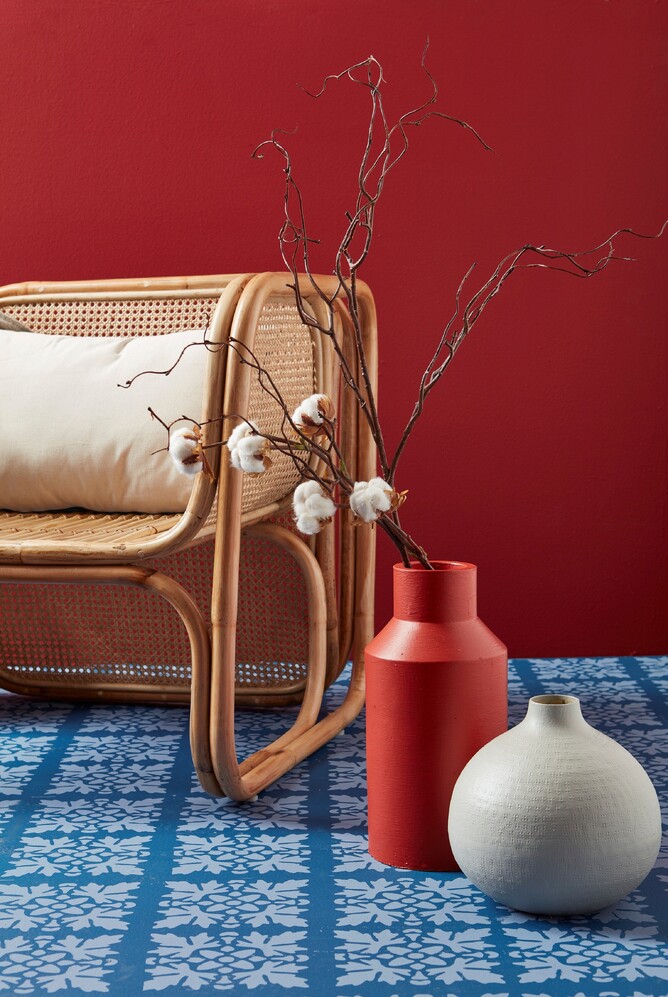The Right Colour
Before you pick up a roller or brush, you'll want to make sure you have the right colour. Unfortunately, the little 5x3cm squares in a colour chart aren't the best indicator of what it will look like on your wall.
To avoid leaving patches of test pot paint all over your walls, that are almost impossible to hide, paint A3 sheets of cardboard with two coats of the trial colour, leaving a white border around the edge of the card. Colour is a chameleon and changes when next to another colour. The white border allows you to see the true colour.
Place the card on the wall opposite a window to see it in full light and under a window to view it in the shade. Assess the colour in the morning, afternoon and under artificial light in the evening to see how the colour changes in different light situations.
Remember to bend the card so you can see what it will look like reflected upon itself.
Know Your Gloss Levels
Paint comes in a few different gloss levels; flat/matt, low sheen, satin, semi-gloss and full gloss. So how do you choose what gloss level to use and where?
The general rule of thumb is; Flat or matt for ceilings, low sheen on interior walls, satin for weatherboard or plaster, and semi-gloss or high gloss for trims.
Gloss levels can affect the final result so it is important to consider how light will play on a wall when choosing your gloss level.
How Much Paint?
This is one of the most asked questions I receive. I suggest working within a calculation of 12 square metres per litre.
Measure the height and length of a wall then multiply those two figures to get the square metre area for that wall. Divide that figure by 12 to get the number of litres you need, then double it to allow for two coats of paint.
Don’t forget you’ll also need to do measurements for the ceilings and trims.
Don’t Forget the Prep!
Proper preparation is the most important step of the painting process as it affects the final finish. Filling holes, sanding and priming are not to be missed!
Basic prep involves cleaning down the surfaces with a clean brush or broom to remove cobwebs and dust. If the surface is dirty, a quick wash with mild sugar soap may be necessary, followed by a wipe down with clean water and a damp cloth.
Any holes and dents in the surface will need to be filled, allowed to dry, sanded and then spot primed.
Paint the Surfaces
Start with the ceilings, that way you won’t get any unwanted paint on your freshly painted walls. Then tackle the walls and finish off with the trims, taping off the skirting, window frames, architraves and doors.
Make sure you cover the floors and all your chattels and furniture.
If you have a steady hand and the confidence to do so, skip the tape and use an angled brush to ‘cut-in’ around the trim. Hold the bristles rather than the handle for better control, and use gentle pressure to fan the bristles out slightly to help create a straight line. Don’t use a cheap brush!
When using a roller, load the paint on, then work it well into the tray. Roll onto the wall until you get a metre section done and then go over this section without reloading your roller.
To even out the section you have just done, roll the roller from the top of the wall to the bottom in one go. Repeat this method for the whole wall.
Getting the Perfect Finish
To get the perfect finish you’ll need at least two coats. Follow the instructions on the label and wait the recommended period of time between coats.
All products have different dry and overcoat times. It’s important to allow the product to dry completely before applying the second coat or the paint could fail due to incorrect curing.
Brighter or darker colours or a radical colour change may require a third coat to get the perfect finish.








